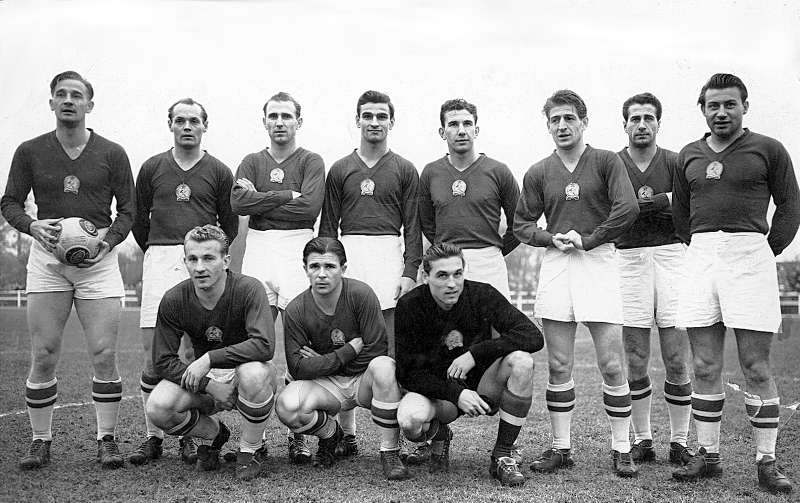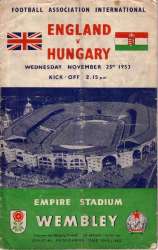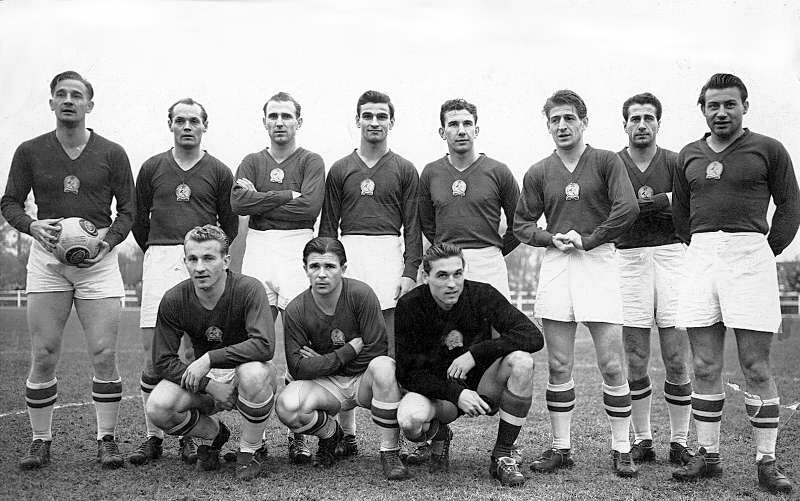 By Kevin Halls
By Kevin Halls
England head off to the European Championship in confident mood having sauntered through their, admittedly not too difficult, group unbeaten.
And with players like Harry Kane, Jamie Vardy and Dele Alli on top form in the Premier League, the signs do look promising for the Three Lions in France.
But haven’t we heard this so many times before?
The media hype up England and go overboard. By the time a tournament arrives, many of us England supporters take it all in and start to think maybe this could be the one, maybe we can lift the trophy.
But this is nothing new. Even way back in the 1950s, the press were building England up to be unbeatable and on the verge of being the best on the planet.
This was partly built on the fact that no overseas side had beaten the Three Lions at Wembley.
But in 1953, a year before the World Cup, they played Hungary in a friendly international at Wembley. The papers had this down as a nice easy win against lesser opposition, even though Hungary were unbeaten in 20 games.
The Magyars had Ferenc Puskas leading them out that day. He didn’t have what you could call a slim, athletic build – in fact, it was more of a podgy, stocky stature.
And of course the press delighted in calling him a “fat, little chap” but by the final whistle the laugh was on them as the Hungarian genius had just turned in one of the best ever individual performances seen at the home of football.
Hungary showed that to them this wasn’t just a friendly. They came out with all guns blazing and were one-up in the very first minute. By the 27th they were leading 4-1.
This game was being watched by a crowd of 105,000 spectators who stood open-mouthed in amazement. They saw a Hungarian side playing a kind of football never witnessed on these shores before.
With a puzzling 2-3-3-2 formation, the ball was being passed around in quick, short bursts and with each player going forwards and backwards at speed. It left the England players bewildered and bamboozled.
This new formation became the prototype for the much later 4-2-4 system which was copied from the Magyars but tweaked a little here and there.
Although the Three Lions netted three goals, they were outclassed and outplayed by the ruthless Hungarians, who banged in six goals and ran the England defence ragged with their clever movement.
At the end of this magnificent showpiece, the words ‘Total Football’ had been coined for the first time.
They had shown the English that their style of football was stale and dated. Although England had great players in Stanley Matthews, Tom Finney and Billy Wright, they were individuals whereas Hungary were a side of 11 players knitted together and with each one knowing their role and what was expected of them.
When asked in later years what made that team so special, Puskas replied: “We all attacked together and all defended together as a unit. But also due to our innovative coaching methods, we felt so much stronger and fitter than our opponents.”
And to prove to the world that the 6-3 romp at Wembley wasn’t a fluke, just six months later on home soil the Magyars thrashed England once more, 7-1 in another ‘friendly’ which was a warm-up match before both countries headed off to the World Cup in Switzerland.
England just couldn’t handle the tactics deployed by the Hungarians. They played the deadly centre-forward Hidegkuti in a deep-lying position which confused the English defenders who were used to seeing traditional centre-forwards upfront competing for crosses and corners.
This enabled the likes of Puskas and Kocsis to bomb forward at will as the centre-half would go and try to mark Hidegkuti which would then leave a nice gap for the marauding Magyars to go and weave their magic.
Kocsis, although basically a defender, had a free role in this great side and he knew where the net was when given an opportunity.
For some strange reason at that time, foreign players had the reputation of being very skilful on the ball but not so deadly at shooting from distance.
But when Hidegkuti put Hungary one-up in that 6-3 win at Wembley with a powerful drive from outside the box, which whistled past Merrick in the England goal, that myth was quickly put to bed.
Yet in an international side full of star players, it was Puskas, the “fat, little chap”, who stood out as he was simply a goal machine.

He also possessed great ball skills, doing Cruyff turns long before the great Dutchman did them.
Although not blessed with great speed or heading ability and one-footed, what a left foot it was. Opposition players remarked that it was as if the ball was glued to his foot and so, coupled with amazing technique, he was a nightmare to mark. His record of 83 goals in 84 matches is a truly awesome statistic so just for that he goes down as a football great.
Hungary went to the 1954 World Cup finals in Switzerland as reigning Olympic champions and also Central European champions, a competition that was the forerunner to today’s European Championship.
It was no surprise to see them as firm favourites to lift the famous trophy – they were now being called the best international side in the world, ahead of Brazil and Uruguay.
The Hungarians didn’t disappoint as they reached the final, where they would play West Germany. They were a surprising finalist as they weren’t the powerhouse they are these days back then.
In fact, they had amateur players in their side and in their group match against none other than Hungary, they were smashed 8-3. This made the Magyars even more the likely winners of the Jules Rimet trophy.
But just like England were at Wembley in 1953, maybe the Hungarians were too over-confident and they underestimated the Germans.
Although they led 2-0 with the help of an early goal from the magical Puskas, they went on to lose the final 3-2.
This match became known as the ‘Miracle of Bern’, which it truly was, as typically the Germans never gave up and, in beating Hungary, they not only won the World Cup but became the first side to beat them in 50 matches – ending their run of 42 wins and seven draws which was then a world record at international level.
In 1956 came the Hungarian Revolution. The political upheaval and infighting resulted in Puskas moving from his native country to Spain to play for Real Madrid where he added to his legend.
Kocsis went to play for Barcelona, while Hidegkuti eventually went into management in Poland, Italy and Egypt.
Although they never won the World Cup, Hungary will go down in the record books as one of the greatest ever national teams. They changed the way football was played which inspired coaches worldwide to copy their style, leaving a lasting legacy. They were most definitely The Mighty Magyars!


















